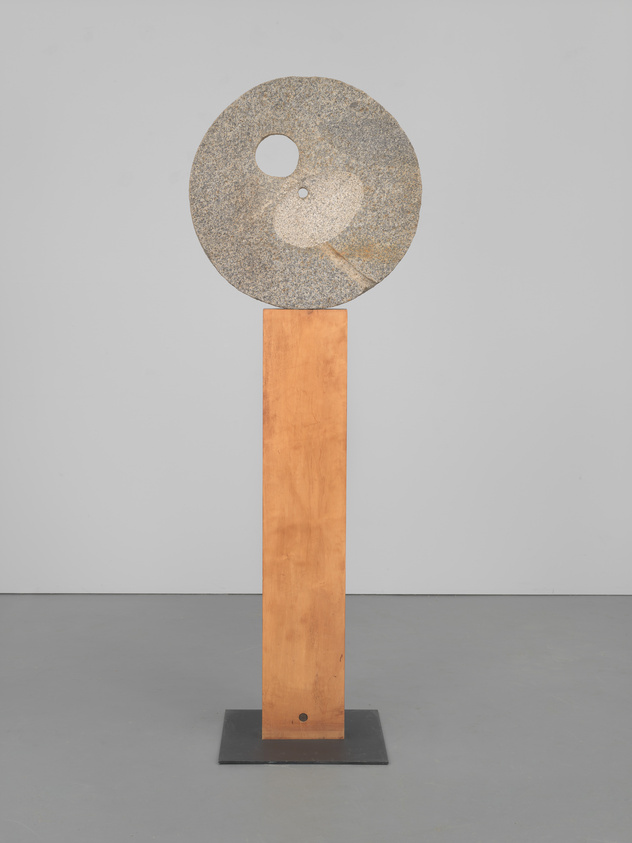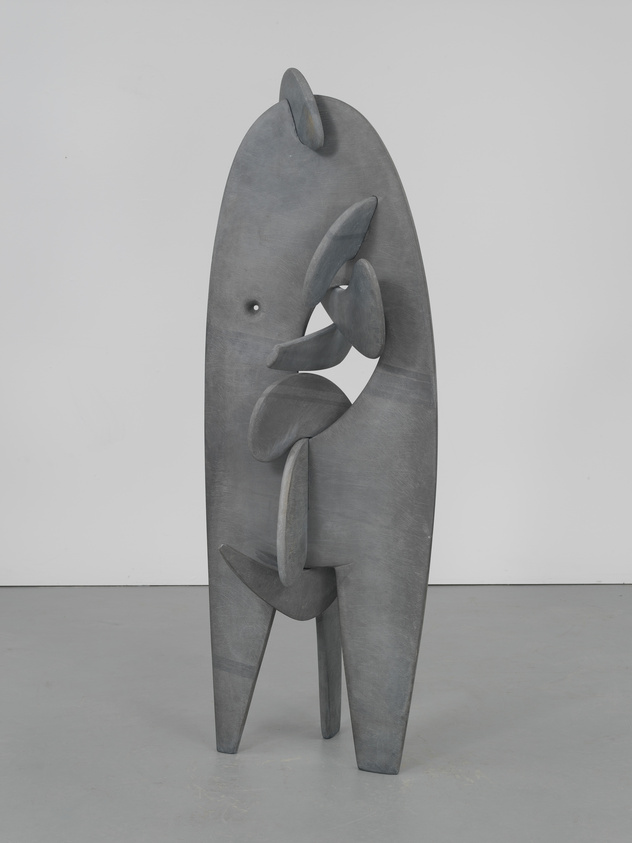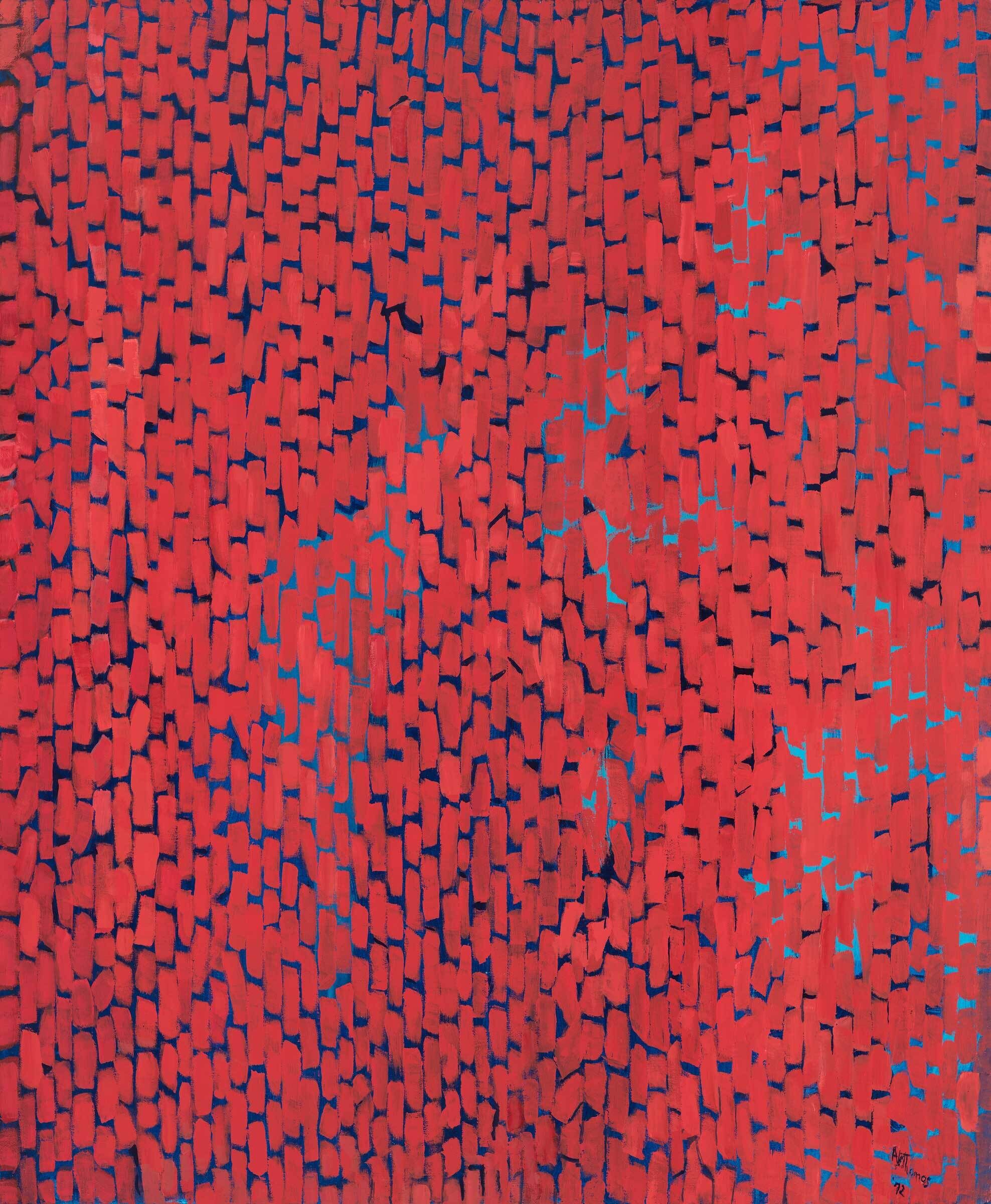Verbal Description: Isamu Noguchi, Humpty Dumpty, 1946
June 25, 2025
0:00
Verbal Description: Isamu Noguchi, Humpty Dumpty, 1946
0:00
Narrator: The work Humpty Dumpty from 1946 by Isamu Noguchi is an abstract stone sculpture approximately 5 feet tall by 2 feet wide with a shallow depth of 17 inches. It is composed of five interlocking pieces, installed here standing on a triangular platform. There is one large, flat oblong form with two legs, and four smaller pieces, shaped like bones or boomerangs. Each piece has been slotted together to create a conjoined structure. There are two smooth holes in the center of the sculpture, one large and one small. Hanging around the top and middle of the main piece of stone are the smaller, flattened c-shaped pieces of slate that protrude from the larger hole, hanging vertically like links on a chain. The small hole is just wide enough for light to pierce, appearing like a single eye. The rounded edges of the stone parts give this sculpture a warm and almost animated quality that moves the eye throughout the composition. Noguchi carved this work out of ribbon slate, an especially fragile type of stone. The entire sculpture is a velvety matte grey with subtle variations in texture and color. While the sculpture has a front and back, it is meant to be experienced in the round.
To create this work, Noguchi first sketched shapes on graph paper, cut them out, and then arranged them into small models. He then used the excised paper to calculate the measurements required for enlarging and transferring elements to the final medium. Humpty Dumpty is held together without any screws or glue, and relies on tension between the interlocking pieces to stay upright, making the work susceptible to breaking if moved or jostled. As Noguchi explained, “everything I do has an element of engineering in it—particularly since I dislike gluing parts together or taking advantage of something that is not inherent in the material. I am leery of welding or pasting. It implies taking an unfair advantage of nature.”
The title of the work, and its precarious construction, evoke the character from the nursery rhyme of the same name. However, this seemingly whimsical work may carry more ominous undertones. Produced shortly after the devastation of the atomic bombs dropped on Hiroshima and Nagasaki by the U.S. during World War II, the sculpture suggests the unstable state of the world in the postwar period.



